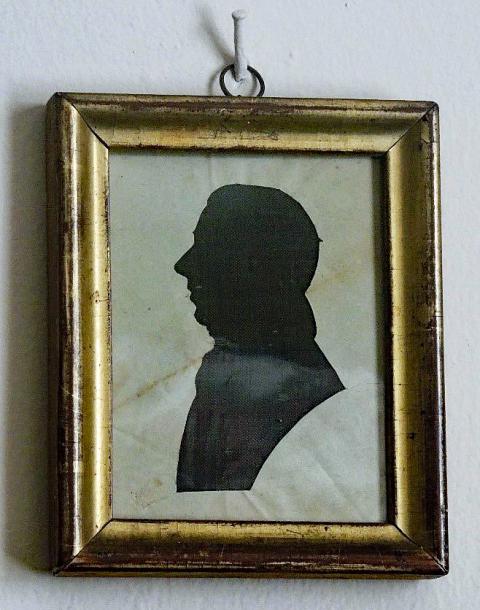
Before photography, if someone wanted to have their portrait made quickly and inexpensively, they might visit a silhouette artist. Cutting portraits became popular in the mid-18th century, and skilled artists using minimal materials could cut an accurate portrait in a matter of minutes.
The term silhouette comes from Étienne de Silhouette, a French minister who enacted severe economic demands on the French people during the Seven Years’ War to curb the deficit and strengthen the nation’s finances. His name became synonymous with anything viewed as cheap and austere, and people who could not afford more expensive painted portraiture turned to the cheap paper cutouts that we now know as silhouettes. Prior to this, silhouettes were referred to as profiles or shades. The invention of the camera heralded the end of the popularity of these portraits.
This unidentified profile of a man in a gilded frame was purchased by the Park Authority in 1989 from an antique store. It is a hollow-cut silhouette, meaning the positive image was traced and cut away from a light-colored paper, leaving the negative outline behind. This was then mounted on a dark background, in this case, black silk. This silhouette can usually be found hanging on a wall in the Master Bedchamber at Sully Historic Site. In a letter from Zaccheus Collins to Elizabeth Collins Lee dated February 22, 1803, Collins refers to a profile of himself that he sent to his sister at Sully. It likely resembled this one, which dates to around 1800.

